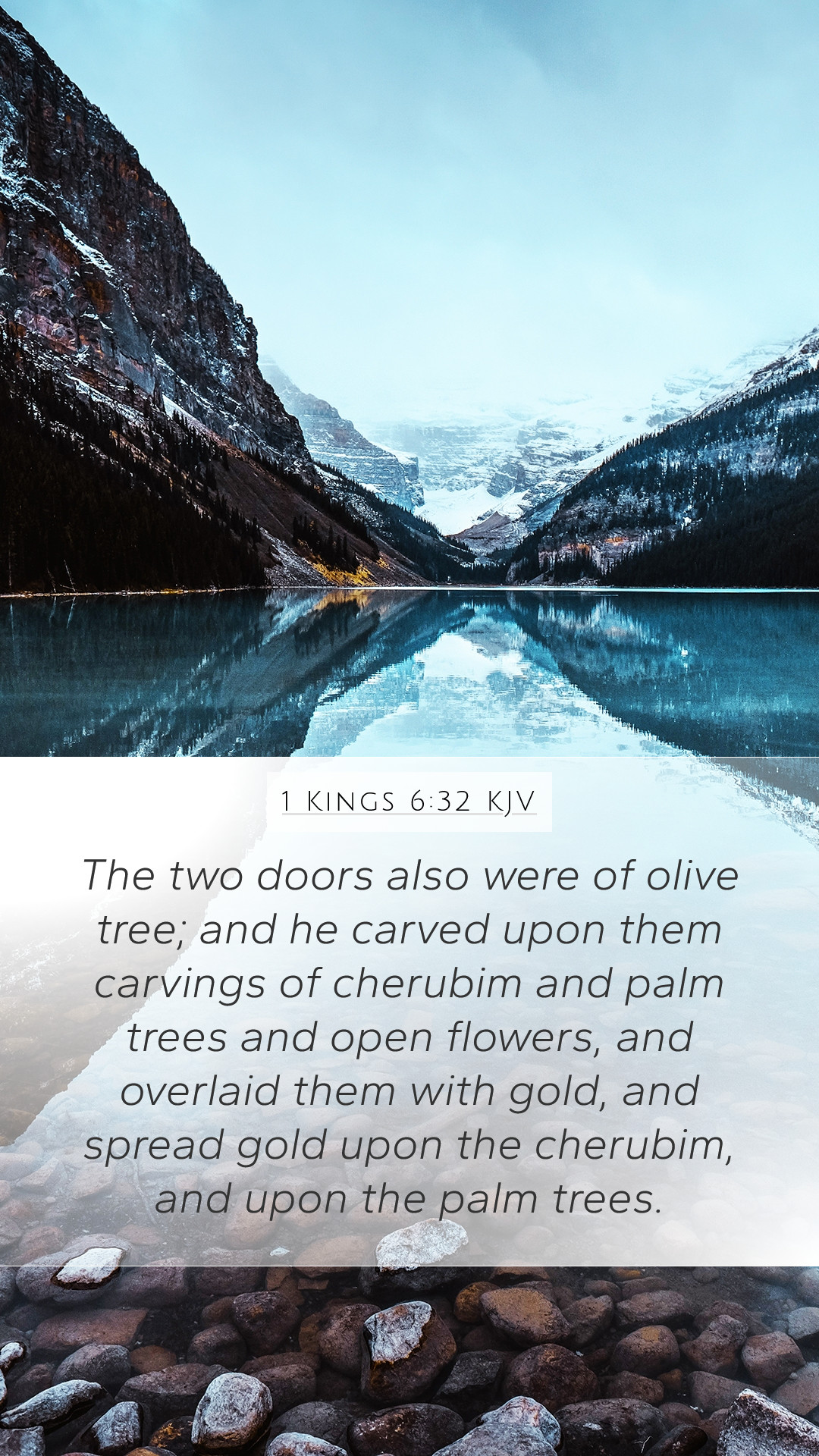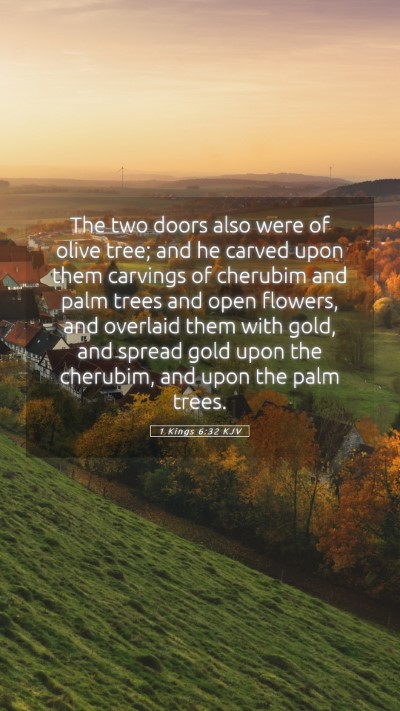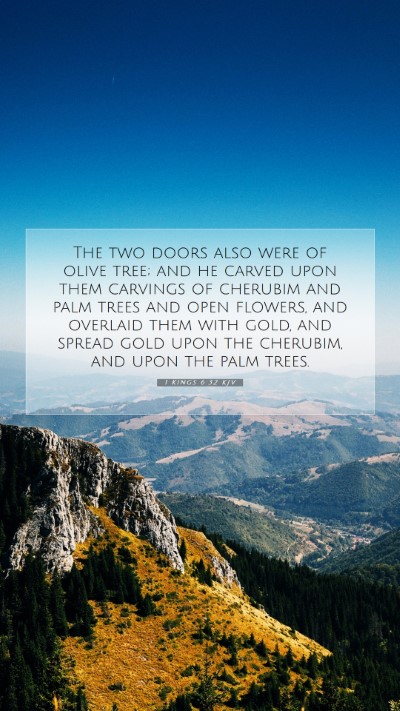Meaning and Commentary on 1 Kings 6:32
Verse Reference: 1 Kings 6:32
Verse Text: "The two doors were of olive tree; and he carved upon them carvings of cherubims and palm trees and opened flowers, and overlaid them with gold, and spread gold upon the cherubims, and upon the palm trees." (1 Kings 6:32)
Understanding the Verse
This verse describes the ornate craftsmanship involved in the construction of the temple doors, showcasing the artistry and significance placed on the design elements that reflect spiritual themes. The use of olive wood, cherubims, palm trees, and gold symbolizes various aspects of God's presence and the beauty of holiness.
Biblical Exegesis and Interpretations
The detailed narrative provided in 1 Kings gives insights into the architectural significance of the temple, emphasizing its sacredness. The presence of cherubims signifies divine guardianship and the palm trees indicate prosperity and peace, which are recurring themes in scripture. The application of gold implies the glory and purity of God. Below are included insights based upon prominent public domain commentaries:
-
Matthew Henry's Commentary
Matthew Henry highlights the symbolic nature of the cherubim carved into the olive wood doors, suggesting they represent God’s divine protection and presence within the temple. He emphasizes the importance of beauty in the things dedicated to God, reflecting on how God deserves the finest offerings, whether artistic or material.
-
Albert Barnes' Notes on the Bible
Barnes elaborates on the choice of materials, indicating that olive wood was both durable and beautiful. He notes that the carvings of palm trees represent victory and peace, and the cherubims embody the protection and holiness that the temple represents. He connects the lavish decoration of the temple doors with God’s glory and significance, enhancing the understanding of sacred space.
-
Adam Clarke's Commentary
Clarke discusses the artistry evident in the carvings, analyzing the cultural significance of palm trees and cherubs in the context of nearby nations as well. He draws parallels between the temple's construction and God’s promises, underscoring how Solomon’s dedication reflects an important historical moment for Israel. Clarke appreciates the meticulous attention to detail as part of an expression of worship.
Significance of the Elements
- Olive Wood: Symbolizes peace and abundance; historically significant in biblical times.
- Cherubims: Represents divine presence and the guardianship of holy places.
- Palm Trees: Associated with victory, peace, and prosperity in biblical context.
- Gold Overlay: Reflects divine glory and the sanctification of holy objects.
Cross References
- Exodus 25:18-20: Details the imagery of cherubim above the mercy seat of the Ark of the Covenant.
- 2 Chronicles 3:7: Further elaborates on the materials used in the construction of temple features.
- Psalms 92:12: The righteous flourishing like palm trees, indicating a connection to blessings.
Application of the Verse
This verse not only provides a historical account but also inspires modern worship and architecture. It encourages the faithful to seek beauty in their places of worship, reflecting on the importance of creating environments conducive to the presence of God. For personal reflection and study groups, consider examining how beauty in worship settings can enhance spiritual experiences.
Bible Study Insights
The study of 1 Kings 6:32 enriches understanding by bringing attention to the artistry in biblical narratives and God’s desire for a beautifully dedicated space. Engaging with this text can inspire discussions in Bible study groups, inviting members to explore the historical, artistic, and spiritual dimensions of the temple.


